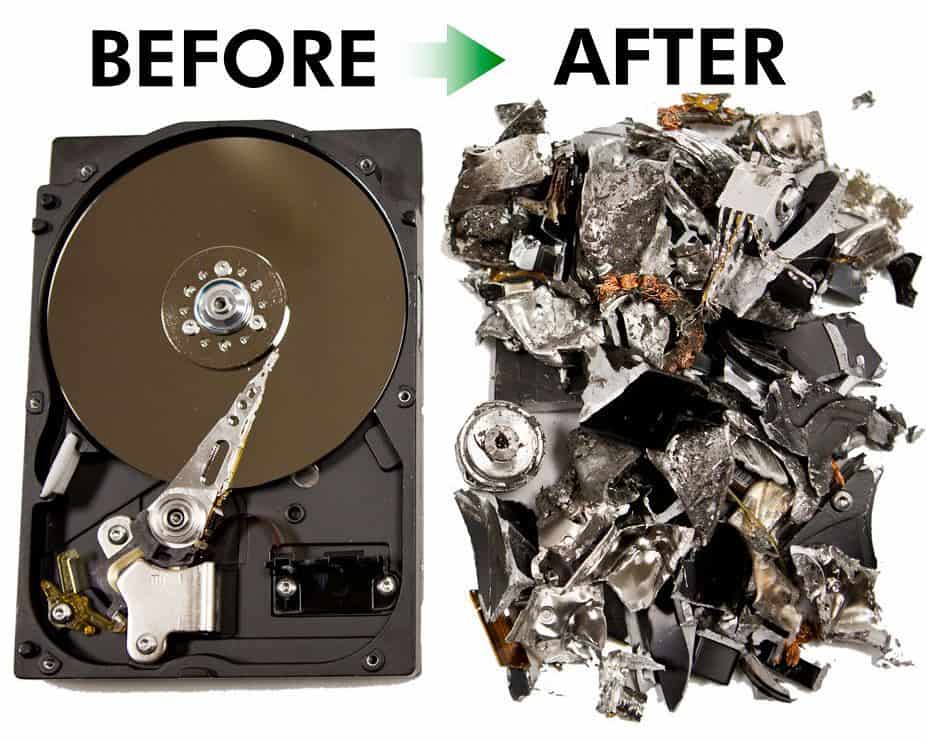Recognizing the Function of Data Destruction in Strengthening Cyber Security Defenses
Recognizing the Function of Data Destruction in Strengthening Cyber Security Defenses
Blog Article
The Significance of Effective Information Destruction Practices in Safeguarding Sensitive Information and Ensuring Computer Protection
In an age where information breaches are significantly usual, the importance of efficient data damage methods can not be overstated. Organizations face significant threats when sensitive info is improperly dealt with, possibly causing unauthorized access and serious monetary repercussions. Executing robust data destruction approaches not only minimizes these threats yet also lines up with legal conformity needs, ensuring that companies copyright their credibility and foster client trust. Nevertheless, the concern continues to be: what specific strategies can be utilized to boost these techniques, and just how can companies effectively incorporate them right into their general cybersecurity structure?
Comprehending Information Devastation
Recognizing data damage is important in today's electronic landscape, where sensitive info can conveniently be endangered. Reliable information damage includes not simply erasing files however guaranteeing that information is irretrievable with detailed approaches. This process is crucial for organizations that take care of personal client info, copyright, or interior records, as any kind of breach can result in severe financial and reputational repercussions.
Information devastation includes numerous methods, consisting of shredding physical media, degaussing magnetic storage gadgets, and utilizing software-based remedies that overwrite information numerous times. Each method serves a certain function and must straighten with the level of sensitivity of the information being dealt with. For example, physical destruction is typically liked for hard disk drives having highly personal information, while software application approaches could be enough for much less sensitive information.
In addition, sticking to sector standards and guidelines, such as the General Information Defense Guideline (GDPR) or the Medical Insurance Transportability and Accountability Act (HIPAA), is necessary for conformity and to alleviate legal risks. Organizations must establish a durable data destruction plan, train workers on ideal techniques, and frequently audit their treatments to guarantee that all delicate details is thrown away safely and effectively.
Risks of Inadequate Practices
Poor data destruction practices reveal organizations to considerable dangers that can have far-ranging consequences. When delicate information is not correctly gotten rid of, it continues to be prone to unapproved gain access to, which can result in data violations and identity theft. Such events not just compromise the safety of individuals yet also taint the organization's reputation, leading to a loss of client depend on and prospective monetary effects.
Furthermore, governing compliance is progressively rigid in lots of markets. Failing to stick to information damage laws can cause substantial penalties and lawful actions against organizations. These penalties can stress monetary sources and divert focus from core company operations.
In enhancement, the misuse of recurring data can result in copyright burglary or corporate reconnaissance, jeopardizing competitive benefits (data destruction). The effect of inadequate information devastation prolongs past prompt monetary losses; it can also result in long-term damages to brand honesty and market placement

Organizations should acknowledge that data protection is not only about avoiding breaches; it additionally incorporates the responsible management of data throughout its lifecycle. Disregarding reliable information devastation procedures can have catastrophic implications, underscoring the necessity for durable measures to minimize these dangers.
Finest Practices for Data Damage
Implementing effective data devastation techniques is important for guarding sensitive info and keeping compliance with regulative requirements. Organizations needs to take on a multi-faceted approach to make sure that information is irretrievable, therefore avoiding unapproved gain access to and possible breaches.
First, information must be categorized based on sensitivity, allowing companies to use suitable devastation approaches tailored to the degree of risk. For electronic data, making use of software-based data-wiping tools that follow industry criteria can properly overwrite existing data. Physical devastation techniques, such as shredding or degaussing, are critical for devices that store delicate info, ensuring complete eradication.
Developing a clear information retention plan is vital, detailing the length of time various kinds of information should be kept before destruction. Regular audits of data storage systems are also necessary to identify outdated or unneeded data needing removal.
Additionally, training workers on the significance of information destruction and the details protocols to comply with fosters a society of safety within the organization. Ultimately, maintaining documents of information damage refines gives responsibility and sustains conformity with interior plans and external regulations. By adhering to More Help these best techniques, organizations can substantially reduce the dangers connected with data direct exposure.
Legal and Conformity Considerations

Failure to adhere to these regulations can result in extreme fines, consisting of significant penalties and reputational damages. Organizations needs to execute a durable information devastation plan that straightens with these lawful frameworks and supplies clear guidelines on the proper methods of data disposal, whether physical shredding or electronic wiping.
Moreover, keeping paperwork of data damage activities is necessary for demonstrating compliance during audits or evaluations. By focusing on lawful and compliance considerations, companies can enhance their data security posture and foster trust with clients and stakeholders, inevitably adding to a more secure data monitoring atmosphere.
Advantages of Effective Data Destruction
Reliable information destruction methods extend past plain conformity; they offer significant benefits to organizations that prioritize them. By making sure that delicate details is irretrievably damaged, organizations minimize the risk of data breaches and the prospective monetary repercussions connected with them. This aggressive method not just safeguards against unauthorized accessibility yet likewise improves the general trustworthiness of the company in the eyes of stakeholders and clients.
Applying robust data damage approaches, such as physical destruction of storage space tools or innovative data cleaning methods, adds her response to the fortifying of an organization's cybersecurity stance. data destruction. It decreases the likelihood of copyright theft and secures exclusive info, therefore keeping a competitive side in the marketplace

Conclusion
In final thought, effective data damage techniques are vital for protecting sensitive details and boosting total computer protection. Ultimately, a dedication to robust information destruction strategies promotes a society of obligation, thereby strengthening an organization's cybersecurity position and preserving client trust.

Report this page